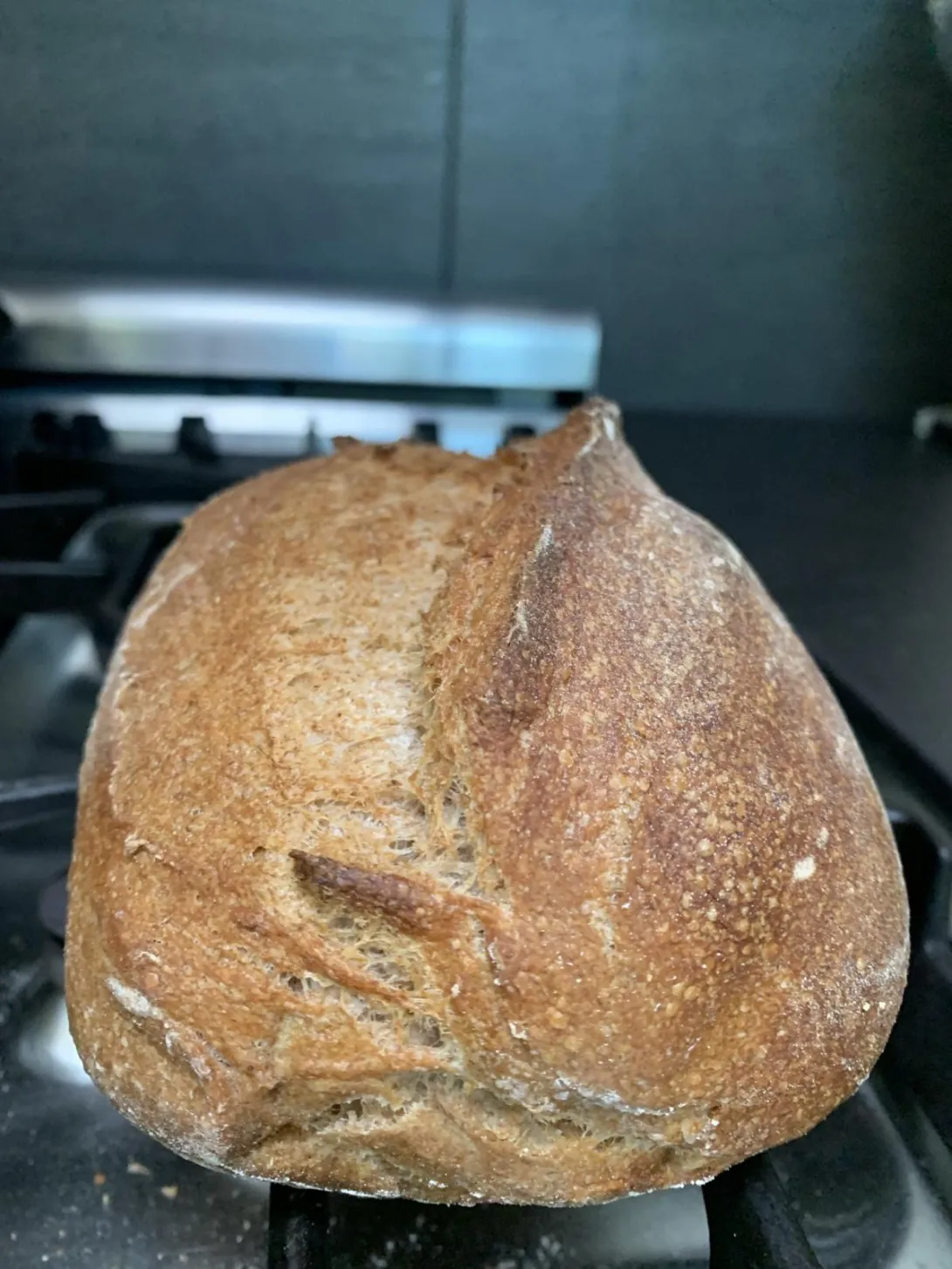
Just bought a MockMill and spelt berries and saw a recipe here from Jonze (sp??) late last night. You mix everything together, so I tried it on a 300g loaf. I digressed from his recipe and just rested the dough for 30 minutes and then did two laminations, 30 minutes apart. 85% spelt flour, 15% milled spelt, 72% hydration, 11% levain (my regular starter I had on hand), 2% salt, 2% Vital Wheat Gluten,1% powdered ginger. It looked like a teeny clay blob but had surprising oven spring.
My question, I thought freshly-milled bread required higher hydration. Is spelt different?
- Phypno's Blog
- Log in or register to post comments
My experience with spelt (and other freshly milled flour) is "it depends". Some days the flour (store bought as well as home milled) seems to need a tad more water, other days not so much. Humidity is a factor. And I know Benny and some others have found a little lower hydration to be helpful with red fife. I guess the bottom line is "your mileage may vary".
When I choose poorly and get the dough too wet (final determination for that made at the end of bulk), I sometimes shift gears and do a pan loaf instead. It seems easier than trying to get the dough to behave and form a nice boule or batard, especially with spelt. Frankly, pan loaves have become my go-to more often than not lately. Summer temps have played with fermentation times so much that just makes it easier to plan.
Hope that helps!
Mary
Spelt does not hydrate the same as other grains and it gives little to no benefit to go with too high a hydration.
I am a devotee of 100% whole wheat / grain. To date, I've principally used Hard Red or White for bread (Soft White for biscuits), so this may not apply to your question.
For home-milled flour, I've found the "magic hydration" begins at 75% for Hard White, and 80% for Hard Red of proofed yeast. I incorporate the water by hand with a tablespoon until no dry flour remains. I then cover with a wet towel and let it sit for an hour.
After one hour, the gluten has fully developed and the bran has either softened and/or been broken down. I'm not qualified to say if that is "autolyse" or not. But it does require a minimum hydration to achieve. The amount varies per wheat variety. And it was the single biggest secret I had to learn in my transition from refined white to home-milled.
I don't know if this helps you. I'm looking forward to learning ancient grains to see how much, if any, of my wheat experience applies to them.